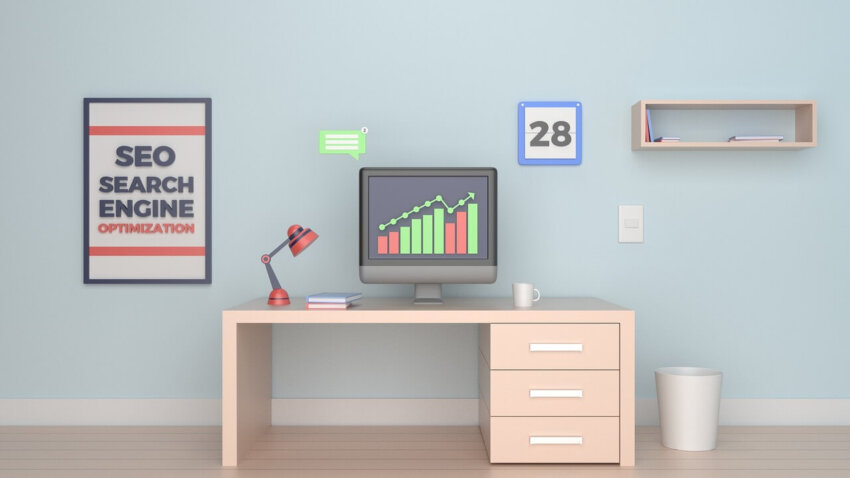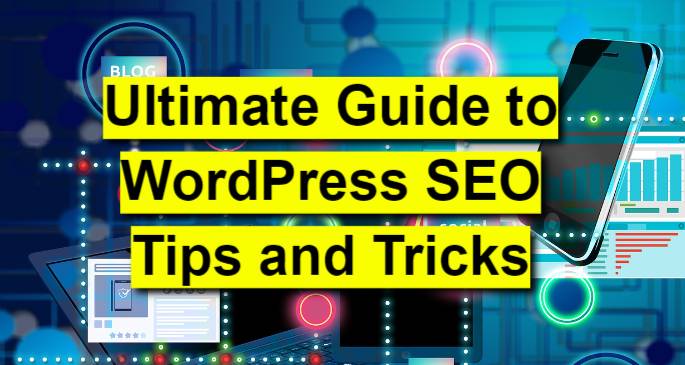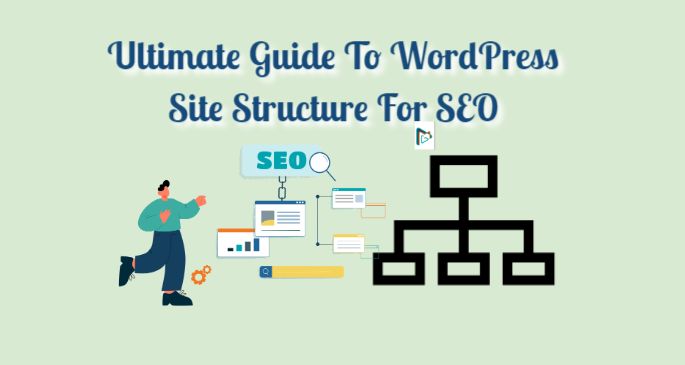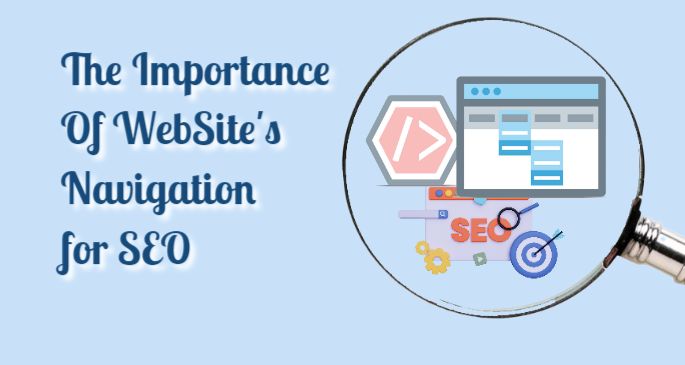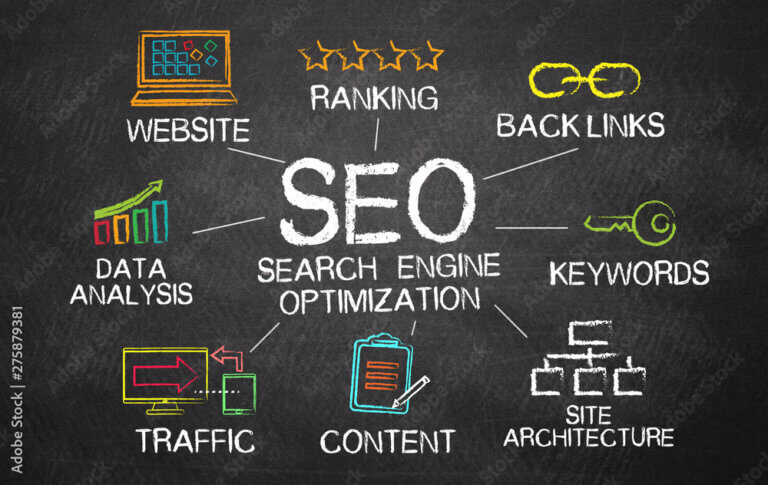If you’re running a website on WordPress, then you’re already off to a great start when it comes to search engine optimization (SEO). WordPress is one of the most SEO-friendly platforms out there, with plenty of built-in features and plugins that can help your website rank higher in search engine results pages (SERPs).
However, just having a WordPress website isn’t enough to guarantee success. In this article, we’ll be covering the top SEO best practices for WordPress, so you can ensure that your website is optimized for search engines and ranking as high as possible.
1: Optimize Your URLs

One of the first things you should do when setting up a new WordPress website is to optimize your URLs. URLs are important for both search engines and users, as they give a clear indication of what the page is about.
You should aim to keep your URLs short, descriptive, and keyword-rich. Avoid using numbers, dates, or other meaningless strings of characters in your URLs. You can easily optimize your URLs in WordPress by going to Settings > Permalinks.
Here are some of the key tips to keep in mind when optimizing your URLs:
- Keep your URLs short: Shorter URLs are easier to read, remember, and share. They also tend to rank better in search engines.
- Make them descriptive: Your URLs should describe the content of the webpage. Use concise, meaningful words that accurately reflect the topic.
- Use keywords: Keywords are an essential part of SEO, so make sure to include them in your
2: Install an SEO Plugin

When it comes to WordPress, the possibilities are endless. One of the most impressive aspects of this platform is the sheer number of plugins available.
And if you’re looking to boost your website’s SEO, you’re in luck. With the help of SEO plugins, optimizing your content for search engines has never been easier.
The most widely used plugin is Yoast SEO, which provides a multitude of features to help you with keyword optimization, meta descriptions, and more. But it doesn’t stop there – Yoast SEO also analyzes your content to ensure that it’s not just optimized for search engines, but for users as well.
While Yoast SEO is widely popular, there are other plugins that perform excellently in optimizing WordPress sites.
Here are some other best WordPress SEO plugins to consider:
- All in One SEO Pack: This plugin is easy to use and includes robust features such as XML sitemap generation, image XML sitemap submission, and social media integration.
- SEOPress: This plugin offers advanced SEO features such as Google Analytics integration, schema markup, and redirections. It also has a user-friendly interface and provides content analysis for optimized rankings.
- Rank Math: This plugin offers a range of features such as keyword optimization, Google Search Console integration, and schema markup. It also provides tracking tools to monitor website performance and optimize content for higher rankings.
- The SEO Framework: This lightweight plugin offers essential SEO features such as title and description optimization, sitemap generation, and social media integration. It is also compatible with popular page builders and works with WordPress multisite.
Using any of these plugins alongside Yoast SEO can enhance your WordPress site’s SEO capabilities and drive more traffic to your website.
3: Use Header Tags
Header tags (H1, H2, H3, etc.) are an important part of on-page SEO. They help search engines understand the structure of your content and give users a clear indication of what each section is about.
Header tags are indispensable in on-page SEO optimization as they help search engines comprehend the structure of your content and provide users with clear indications of what each section is all about.
To optimize your content for search engines and make it more user-friendly, consider using header tags to break up your content into easily digestible sections.
Here are some bullet points to consider when using header tags:
- Use H1 tag for your main heading.
- Use H2, H3, and so on for subheadings.
- Break up your content into sections that make sense.
- Use header tags to highlight important points.
- Make sure the use of header tags is consistent throughout your content.
Adding header tags to your content in WordPress is easy using the visual editor. So, make sure you use them to make your content more appealing to search engines and readers alike.
4: Optimize Your Images
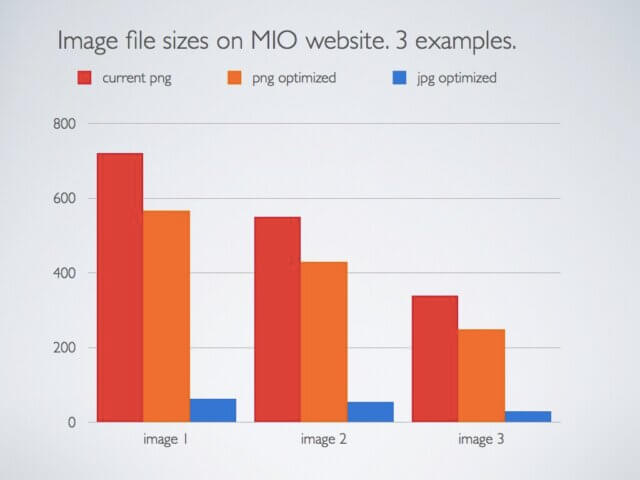
Images are a great way to enhance your content and engage users, but they can also slow down your website if they’re not optimized correctly. You should aim to keep your image file sizes as small as possible without sacrificing quality.
You should also ensure that your images have descriptive file names and alt tags. This will help search engines understand what your images are about and improve your chances of ranking in image search results.
If you want to make sure that your website is optimized to engage users and rank highly in image search results, it’s important to pay attention to your images. Here are some tips to keep in mind:
- Optimize your image file sizes: You want your images to be high-quality, but you don’t want them to be so large that they slow down your website. Use an image compression tool to reduce your file sizes and keep your pages loading quickly.
- Use descriptive file names: When you save your images, use file names that describe what the image is. This can help search engines understand the content of your page and make it more likely that your images will show up in relevant searches.
- Add alt tags: Alt tags are HTML attributes that describe what an image is for people who can’t see it (e.g. screen readers). They also provide additional information for search engines. Make sure your alt tags are descriptive and include relevant keywords.
5: Improve Your Site Speed

Site speed is an important ranking factor for search engines, and it also affects user experience. A slow-loading website can lead to high bounce rates and lower engagement.
You can improve your site speed in WordPress by optimizing your images, using a caching plugin, and minimizing your CSS and JavaScript files. You can also use a content delivery network (CDN) to speed up your website.
To ensure that your website loads as quickly as possible, here are some steps you can take in WordPress:
- Optimize your images: Large image files can significantly slow down your website. To optimize your images, make sure they are compressed and have the correct size and format. You can also use plugins like Smush to compress your images automatically.
- Use a caching plugin: Caching plugins can help speed up your website by storing frequently used data in a cache. This means that the next time a user visits your site, the server doesn’t have to fetch all the data again.
- Minimize CSS and JS files: Large CSS and JavaScript files can also slow down your website. Minimizing these files can reduce the amount of data that needs to be transferred, which can improve loading times.
- Use a content delivery network (CDN): A CDN can help speed up your website by distributing your website’s content across multiple servers around the world. This means that users can access your website from a server that is geographically closer to them, which can improve loading times.
By taking these steps, you can significantly improve your website’s speed and ensure that your users have a better experience.
6: Use Internal Linking

Internal linking is a great way to keep users on your website for longer and help search engines understand the structure of your content.
You should aim to include internal links to related content within your website. This will help users discover more of your content and improve your chances of ranking higher in search results. Incorporating internal linking into your website’s structure is a valuable tactic for both user experience and search engine optimization.
By linking related content within your website, you can keep users engaged with your site for longer periods of time, ultimately reducing bounce rates and increasing overall engagement.
Additionally, incorporating internal links can help search engines like Google better understand the hierarchy and organization of your content, leading to higher search rankings.
Here are some key benefits of incorporating internal links:
- Boost user engagement by directing them to more relevant content on your site.
- Reduce bounce rates and increase time spent on site.
- Improve search rankings by providing search engines with a clear understanding of your content hierarchy.
- Help establish internal linking as a best practice within your website, leading to more efficient content management and organization.
By incorporating internal links into your website’s structure, you can keep users engaged and improve your chances of ranking higher in search results.
7: Create Quality Content

At the end of the day, the most important thing for SEO is quality content. You should aim to create content that is informative, engaging, and valuable to your audience.
You should also ensure that your content is optimized for keywords and includes relevant header tags, meta descriptions, and internal links. Quality content will not only help you rank higher in search results, but it will also keep users coming back for more.
Creating quality content is paramount for search engine optimization (SEO) success. Not only should your content be informative, engaging, and valuable to your audience, but it should also cater to the technical aspect of SEO.
To make your content SEO-optimized, follow these bullet point lists:
- Optimize your content for keywords that are relevant to your audience and industry.
- Use header tags to structure your content and make it easier to read for both humans and search engines.
- Write meta descriptions that accurately describe your content and include your target keywords.
- Include internal links to other relevant pages on your website to improve navigation and user experience.
By creating high-quality content that incorporates these SEO tactics, you’ll not only increase your search engine ranking, but you’ll also retain your audience due to the value that your content provides.
So invest time and effort into creating quality content that meets both the technical and human aspects of SEO.
8: Monitoring Website Analytics
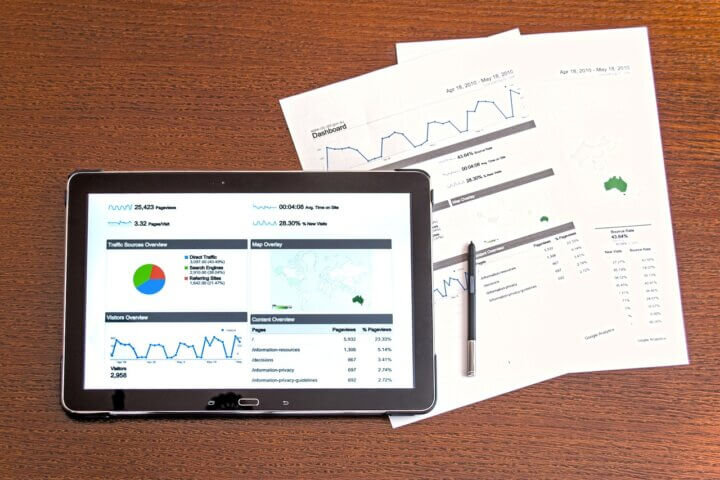
Finally, you should always be monitoring your website’s analytics. This will give you valuable insight into how your website is performing and where you need to make improvements.
Analytics can tell you which pages are getting the most traffic, which keywords people are using to find your site, and which pages are causing people to leave your site.
By monitoring your analytics, you can identify areas where you need to make changes and optimize your website accordingly.
There are a number of different analytics tools available, but Google Analytics is one of the most popular and widely used. It’s free to use and provides a wealth of information about your website’s performance. Some of the metrics you’ll want to pay attention to include:
- Traffic sources: Where is your traffic coming from? Are people finding your site through search engines, social media, or other websites?
- Pageviews: Which pages on your website are getting the most views? Are there any pages that are consistently underperforming?
- Bounce rate: What percentage of visitors are leaving your site after only viewing one page? A high bounce rate could indicate a problem with your website’s design or content.
- Conversion rate: Are visitors taking the actions you want them to take on your site? This could include filling out a contact form, making a purchase, or signing up for a newsletter.
By paying attention to these metrics and making adjustments as necessary, you can improve your website’s performance and attract more visitors over time.
Conclusion
In conclusion, optimizing your WordPress website for SEO is essential if you want to attract more visitors, improve your search engine rankings, and grow your online presence. By following the best practices outlined in this article, you can make your website more appealing to both search engines and human visitors alike.
Remember to focus on creating high-quality content that is optimized for your target keywords, using descriptive and informative meta tags, optimizing your website’s performance and mobile-friendliness, utilizing internal and external links, and monitoring your analytics for insight into how your website is performing.
By taking these steps, you can ensure that your WordPress website is well-optimized for SEO and set yourself up for long-term success online. So, take the time to implement these best practices, and watch as your website climbs the search engine rankings and attracts more visitors than ever before.

